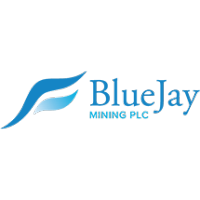Bluejay’s Greenland ilmenite project receives European backing

2nd March 2022
The European Raw Material Alliance (ERMA) has announced its official support for Bluejay Mining’s Dundas project, enabling it to secure supply of ilmenite from the Greenland project for end-users in the European Union (EU).
This, the company said on Wednesday, would aid the creation of a secure mining and supply chain option for titanium ore and concentrate, of which ilmenite is the principal constituent, for the EU.
Historically, production of titanium ore and concentrate on the European continent has been sourced from long-established hard-rock deposits in Norway and mineral sands projects in Ukraine.
Bluejay said the Dundas project was an independent mineral sands project not tied directly to any sulphate process titanium dioxide (TiO2) pigment producer. Ilmenite is also suitable for the production of slag for direct use in the production of titanium tetrachloride, an intermediate for both chloride TiO2 pigment and titanium metal.
“It is the primary role of ERMA to secure raw materials and raw material supply chains for Europe to support industrial ecosystems within the European Union. The Dundas ilmenite project in Greenland fulfilled ERMA’s qualification requirements. Bluejay operates under a solid regulatory Greenlandic environmental and social standards framework and has strong local community support which makes it a winner for European mining and manufacturing, making the European bloc less dependent on other markets,” ERMA director Massimo Gasparon commented.
This is the first mining project supported by the ERMA in the Arctic region.
Titanium use in Europe is largely driven by the use of TiO2 as a white pigment in paints and polymers, plastics and films and, to a lesser degree, the metal is used for European aerospace, marine, defence and energy conversion industrial ecosystems and applications. However, future applications are expected to see the demand soar for titanium for 3D printing, the battery and fuel cell industry (as a potential new anode and coating material) as well as a strength-to-weight preferred material in, for example, robotics, drones and light vehicles.
The original article can be found on the Mining Weekly news website